Just what is the aliens’ plan in Close Encounters of the Third Kind? We know they’ve come to Earth in the past and kidnapped a random selection of people — some of them military personnel, others just ordinary folks — along with, in the military cases at least, their vehicles. Now they’ve come back, but to do what, exactly? First, they leave those captured vehicles in random, out-of-the-way places, such as a ship in the middle of the desert. Then they zip down from the skies and buzz aircraft or swoop along US highways, causing all sorts of poltergeist-like electrical disturbances as they go, including shutting off the power to whole towns (including hospitals?), incidentally causing skin burns in those who see them too close, and resulting in at least one policeman crashing through a road safety barrier and down a (fortunately not too steep) incline beyond. They kidnap a child whilst terrorising its mother; they induce a mental breakdown in the lead male character who, as a result, loses his job and then his family.
The odd thing is that, throughout, everyone seems to feel this is all to some ultimately benevolent end. Roy (Richard Dreyfuss) wants answers, and Jillian (Melinda Dillon), who had her child ripped from her hands after having a selection of kitchen knives thrown at her, wants her child back, but both seem more angry at the government for refusing to admit anything’s happening, than at the aliens, who are the cause of it all.
And what do the government know, anyway? (And it’s not just the treacherous post-Watergate US government. At some significant meeting before the film begins, it’s said to have gone very well for the French in some way, meaning François Truffaut’s Claude Lacombe is in charge of the whole official response. His speaking French to the US military and government implies that the difference between their attitude and his is a question of people speaking, metaphorically as well as literally, entirely different languages.) The most the government seem to do is rush around ticking off vehicles as they’re returned, and listening to a crowd in India enthusiastically chant a five-note melody then pointing at the sky. Associating this melody with a series of hand signals gets Lacombe a round of applause, as though translating this message from one abstract form to another were some sort of breakthrough. Later, while the other government scientists are getting excited over the idea that a series of numbers being beamed at them from somewhere within the solar system might be map coordinates, Lacombe shouts at them to listen, then once again picks out the five-note melody, as though he’s only just discovered it.
This welter of strange phenomena — electrical disturbances, lights in the sky, sunburn at night, random kidnappings, lost military vehicles reappearing in desert locations, obsessive visions of a mountain landmark, a five-note musical sequence — feels like one of those “terminal documents” J G Ballard’s near-to-breakdown protagonists from The Atrocity Exhibition insist on making: fragmented lists of specific-but-random images or objects they nevertheless assert “all make up one picture”. (At one point, Roy, tearing apart his and his neighbour’s gardens for raw materials to build a living-room-sized sculpture of Devil’s Tower, says, “You ever look at something and it’s crazy, then you look at it another way and it’s not crazy at all?”) Like The Atrocity Exhibition, and Garner’s Red Shift, Eliot’s The Waste Land, and Wilson’s The Outsider, Close Encounters is crisis literature, but it’s not an individual going through a crisis, it’s an entire world, even though it occurs as much at a domestic as an international level. (Roy’s wife, Ronnie (Teri Garr), on the poltergeist-levels of disruption of Roy’s UFO obsession: “It’s turning this house upside down.”)
But where does it all lead? What are the aliens doing? It’s as if they’ve come, not to reassure humanity there’s a greater power up there in space that’s looking after them — they’re not, it turns out, the sort who disarm our nuclear weapons and wag an extraterrestrial finger at us, as in The Day the Earth Stood Still — but, rather, they’ve come to reassure us that the world is far stranger than we’ve become used to. Our world, the aliens seem to want to say, is capable of turning upside down, of breaking apart, of having things disappear then reappear thirty years later for no apparent reason, of having the sun come out in the middle of the night, of interrupting your normal, humdrum life with disruptive artistic visions, devastating losses, and wonder-inducing bright lights. One of the government men says, at one point, “There’s so much we don’t know.” He, it seems to me, is the one who sums up the aliens’ message. Not that they’re some vast benevolent force who are going to intervene in the course of human history and save us from ourselves, but, rather, that they’ve come to remind us of chaos — creative chaos, but disruptive and often painful chaos all the same — to remind us that this is what life’s about. Unpredictability. Incomprehensibility. Then they go away, taking another human with them, as though to say, “Don’t think this is over.”
The end of Close Encounters (1977) is oddly similar to the end of Raiders of the Lost Ark (1981). In both cases, we have a remote, rocky location where a film crew — an actual film crew in the case of the Nazis in Raiders, a government crew of scientists in Close Encounters, though one equipped with a host of cameras, bright lights, and even a musical instrument, therefore much closer to a film crew than your usual group of government scientists (it’s even, to underline the analogy, presided over by a real-life director, François Truffaut) — attempt to record the unrecordable: a meeting with the supernatural. (Which ties both films in with all those ghost stories where scientists try to understand the supernatural with a host of electrical measuring devices, as in The Stone Tape or The Awakening.) Clouds gather, and wonder-inducing lights weave among the watchers — angelic ghosts in the case of Raiders, UFOs in the case of Close Encounters — before the main visitation itself. This, of course, is where the two differ. In Raiders, the angels turn to demons and everyone who’s been watching gets melted, burned, or zapped; in Close Encounters, everyone gets a milder-comeuppance: a dose of benevolent awe and bewilderment. The worst that happens is a window gets shattered and a man has to rush to the toilet.
The key to Close Encounters is probably in the way the kidnapped child reacts to it all. He’s not scared of all that poltergeist activity (just like the young girl in Poltergeist (1982), in fact) — the eerie wind-up monkey that springs to life in the middle of the night, the vacuum cleaner that begins hoovering the carpet on its own, the kitchen knives that launch into the air — he just accepts it as part of how the world is, sometimes. (He also almost gets run over by standing in the middle of a bend in the road. Childlike wonder is no defence.) And the aliens themselves, even those who aren’t child-sized and child-proportioned, look more like childish drawings, with ill-shaped potato heads, round starey eyes and shapeless mouths, can’t-be-bothered-to-draw-it-right long-fingered hands and vague, oval bodies. “It’s like Halloween for grown-ups,” says Jillian, in the early days of waiting for the UFOs to reappear. Lacombe, shouting, “Écoutez”, as he picks out a five-note melody on his toy keyboard, and who brandishes crude paintings as evidence before the military, is like a child who insists on taking his own games as seriously as the adults take things like bills and work and national security. But, at the same time as all this child-like wonder and awe, there’s also a feeling of childish self-involvement which, however unintentionally, hurts others. It all starts to feel a little like that Star Trek plot where the god-like alien is just about to kill the crew of the Starship Enterprise when his parents turn up and tell him to stop being such a naughty boy. Are we dealing with grownup aliens, here? They certainly don’t behave that way.
Close Encounters is, at its most boiled-down, a film in praise of awe and wonder. Made as it was in a post-Watergate, post-1960s age of increasing cynicism, it duly acknowledges the adult complications of awe and wonder: mental breakdown, paranoia, governmental attempts to return things to a point of control and secrecy, and the possibility of real, irrevocable loss on a human level. But ultimately it waves its hands over those things. We see Roy ascending to the skies like a child being taken, finally, to the ultimate Disneyland; we don’t see his wife and children living with the aftereffects of his breakdown and abandonment. Also, perhaps too obviously, it’s about the most cinematic aspects of awe and wonder: bright lights, close-ups of wide-eyed human faces, strange and awful things you’ve never seen before (and wouldn’t really want to see, outside of a cinema), and wonderfully convincing special effects.

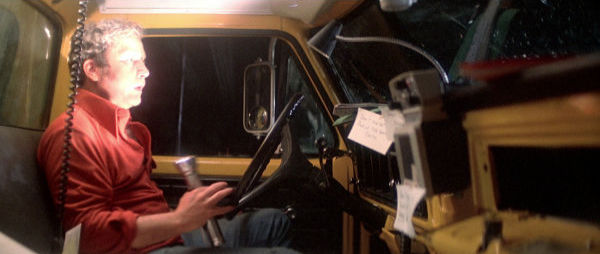
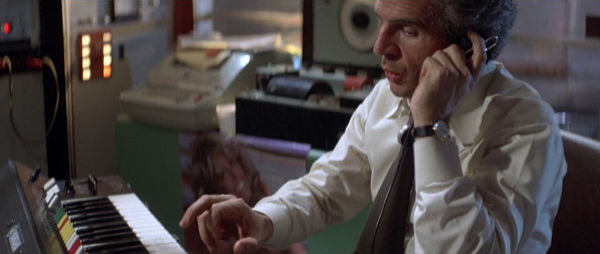
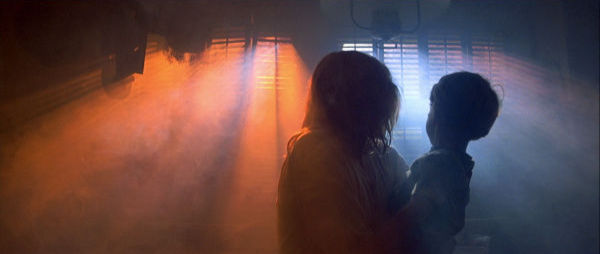
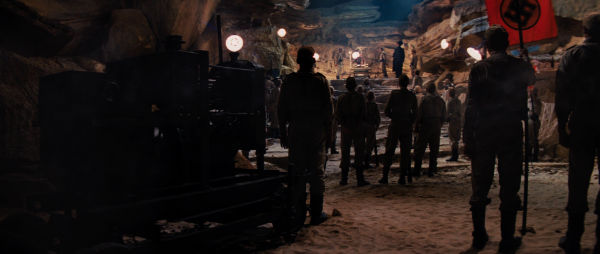
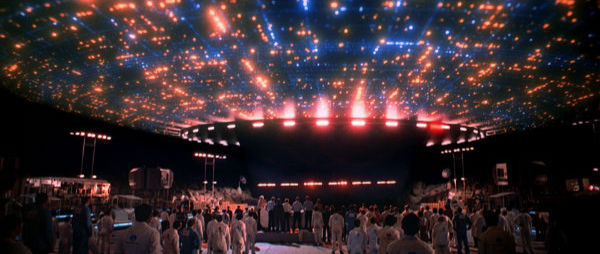
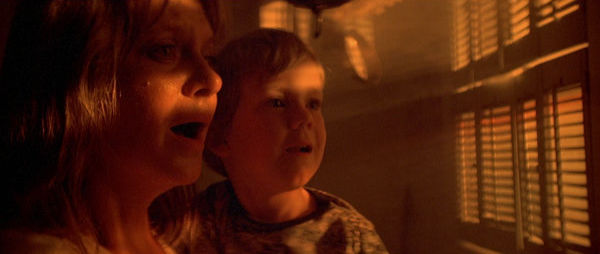
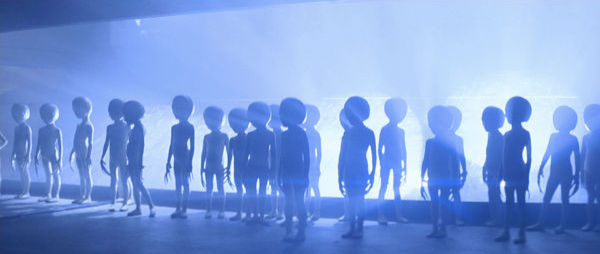
You raise a very good point re the aliens’ agenda. What are they trying to accomplish? In terms of collateral damage, your mention of the ark made me wonder if they are being unintentionally disruptive? In stories, movies etc, there’s usually some paranormal carry-on (poltergeist activity etc) when a supernatural force tries to manifest itself, even if the force itself is essentially benevolent.
It’s interesting to see how Spielberg deliberately subverts his earlier optimism in ‘War of the Worlds’ by having the dying alien reach out from its machine with one hand (a la ET) only to immediately expire.
Yes, you’re right about Spielberg’s War of the Worlds. I remember being surprised he did such a faithful adaptation (apart from moving it to the US, of course), considering this was the man who made Close Encounters and ET. And, as you say, particularly with that parallel to ET with the alien hand reaching out. Like he’d become a bit more cynical about the world, perhaps — or is that reading too much into it?
Maybe a slight shift in the zeitgeist too? That whole bleak, dystopian vibe was becoming more and more a feature of sf movies, even back then.
True. Plus, I suppose, you can’t have a war of the worlds without killing a few aliens…
I’m quite looking forward to the BBC’s period adaptation, coming later this year:
https://www.radiotimes.com/news/2018-06-14/when-is-the-war-of-the-worlds-on-tv-who-is-in-the-cast/
Looks interesting!
Really enjoyed this look at Close Encounters, a film I love, and you’re right on all these points. It’s a bit like a conspiracy theory – little pieces shine with meaning in isolation but don’t quite add up when all put together! But it’s an enjoyable show, nonetheless.